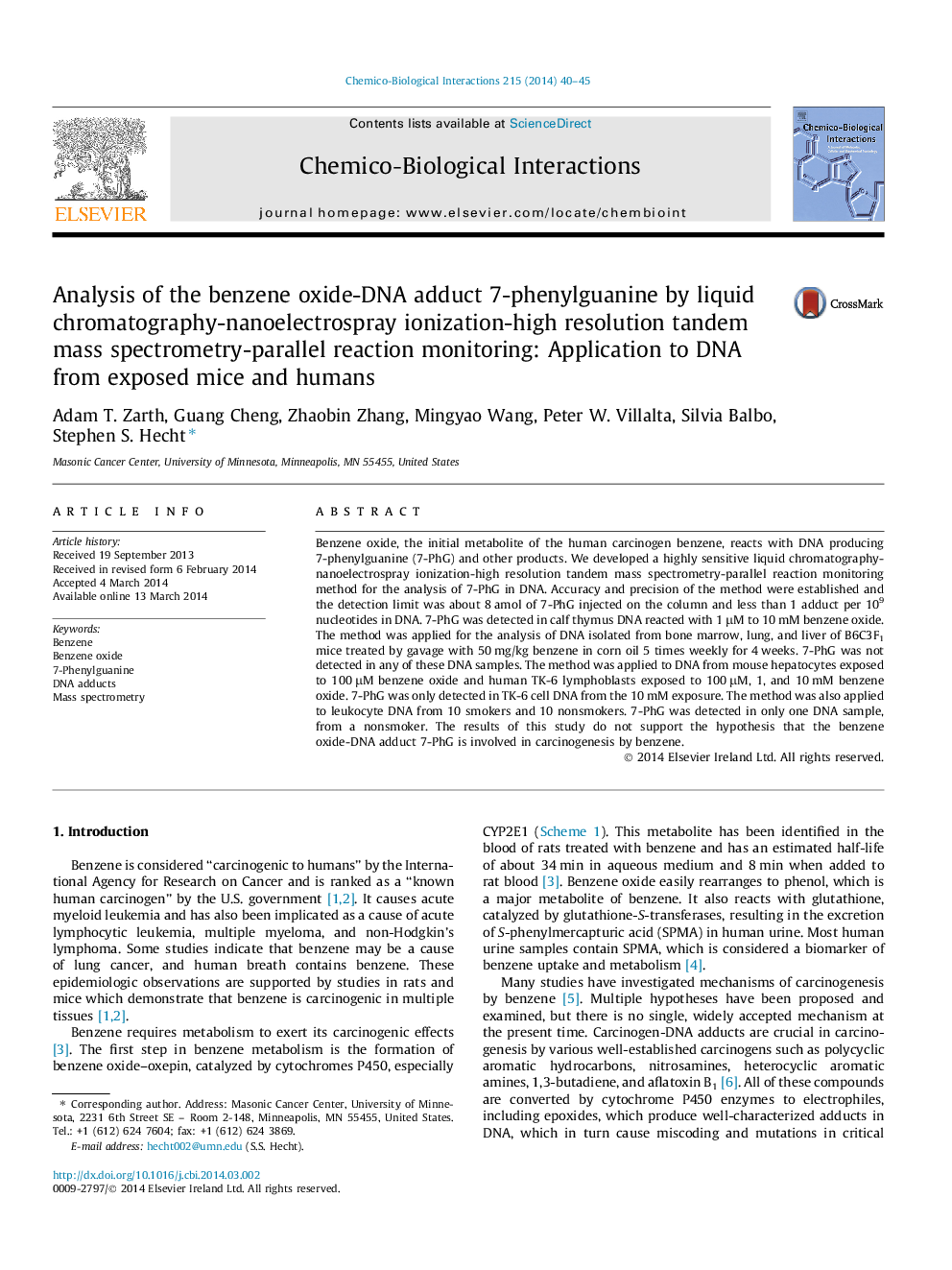| کد مقاله | کد نشریه | سال انتشار | مقاله انگلیسی | نسخه تمام متن |
|---|---|---|---|---|
| 2580476 | 1561626 | 2014 | 6 صفحه PDF | دانلود رایگان |

• The human carcinogen benzene can form the DNA adduct 7-phenylguanine.
• A sensitive mass spectrometry method can detect 7-phenylguanine in DNA.
• 7-Phenylguanine was detected in calf thymus DNA reacted with benzene oxide.
• 7-Phenylguanine was not detected in DNA from tissues of mice treated with benzene.
• 7-Phenylguanine was detected in 1 of 20 human leukocyte DNA samples.
Benzene oxide, the initial metabolite of the human carcinogen benzene, reacts with DNA producing 7-phenylguanine (7-PhG) and other products. We developed a highly sensitive liquid chromatography-nanoelectrospray ionization-high resolution tandem mass spectrometry-parallel reaction monitoring method for the analysis of 7-PhG in DNA. Accuracy and precision of the method were established and the detection limit was about 8 amol of 7-PhG injected on the column and less than 1 adduct per 109 nucleotides in DNA. 7-PhG was detected in calf thymus DNA reacted with 1 μM to 10 mM benzene oxide. The method was applied for the analysis of DNA isolated from bone marrow, lung, and liver of B6C3F1 mice treated by gavage with 50 mg/kg benzene in corn oil 5 times weekly for 4 weeks. 7-PhG was not detected in any of these DNA samples. The method was applied to DNA from mouse hepatocytes exposed to 100 μM benzene oxide and human TK-6 lymphoblasts exposed to 100 μM, 1, and 10 mM benzene oxide. 7-PhG was only detected in TK-6 cell DNA from the 10 mM exposure. The method was also applied to leukocyte DNA from 10 smokers and 10 nonsmokers. 7-PhG was detected in only one DNA sample, from a nonsmoker. The results of this study do not support the hypothesis that the benzene oxide-DNA adduct 7-PhG is involved in carcinogenesis by benzene.
Journal: Chemico-Biological Interactions - Volume 215, 25 May 2014, Pages 40–45